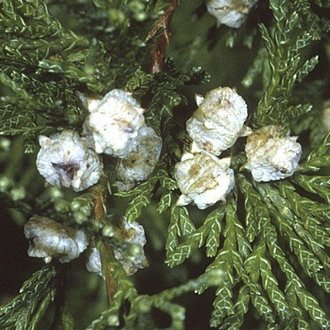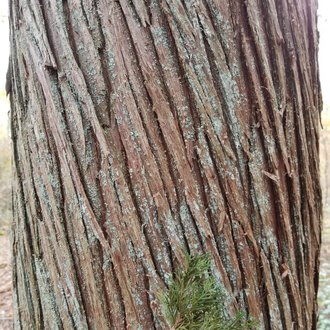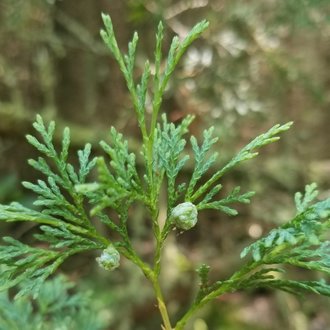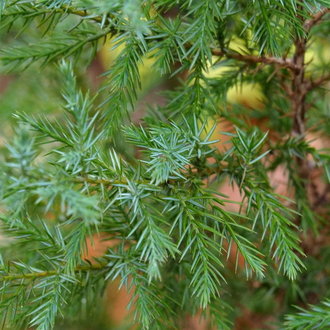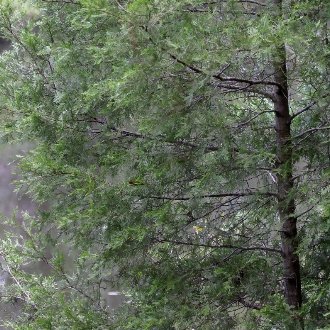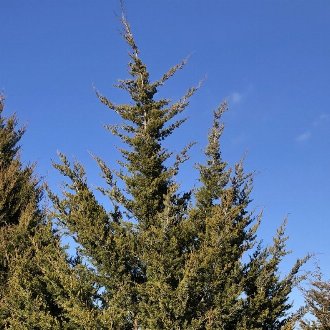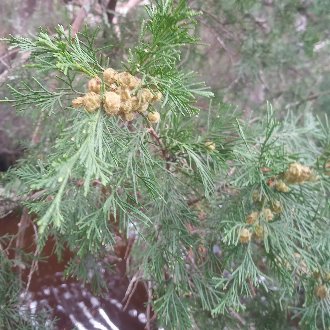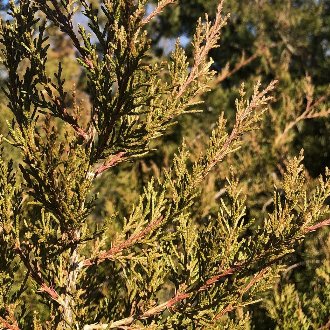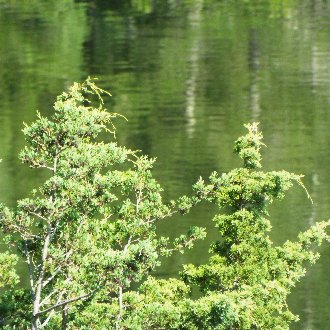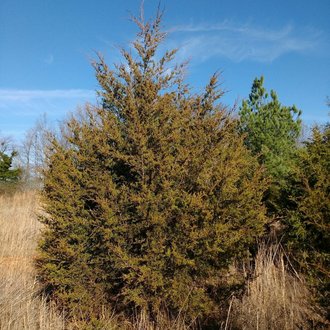Atlantic White Cedar vs Eastern Redcedar
These two species are easily confused where their ranges overlap, especially on mature trees with scalelike foliage. They can be told apart easily by closely examining their seed cones, and by bark, shape, and foliage color. Although they can occur near each other, they have little habitat overlap by specific site. Redcedar is much more common and widely adaptable, and prefers drier sites. Atlantic white cedar is limited to acidic wetlands. Both are occasional in landscaping.
Atlantic White Cedar (Chamaecyparis thyoides) | Eastern Redcedar (Juniperus virginiana) |
An evergreen conifer native to acidic, sandy wetlands of the Atlantic and Gulf coasts. | A native evergreen conifer of sunny habitats; unlike most conifers, tends to decrease soil acidity. |
Unripe seed cones are larger and have more pointed scales, looking lumpy or pointy. Photo © Robert H. Mohlenbrock, Public Domain. | Unripe seed cones are smaller and smoother, looking more shaped like a simple sphere. Photo © Dan MacNeal, CC BY 4.0. |
Ripe seed cones turn brown and open, releasing wind-dispersed seeds when ripe. Photo © botanygirl, CC BY 4.0. | Berry-like seed cones turn blue when ripe, and usually remain on tree until eaten by birds. Photo © Drew Sauve, CC BY 4.0. |
Bark is thicker, with wider ridges that often (not always) spiral slightly around the trunk. Trunk is less likely to be fluted. Photo © C. Ben Schwamb, CC BY 4.0. | Bark is thinner, peeling in narrow, vertical strips. Trunk is more likely to be fluted (some sections bulging out more than others.) Photo © dvollmar, CC BY 4.0. |
All except the youngest plants have scale-like foliage. Photo © Kevin Keegan, Public Domain. | Plants retain sharp, needle-like foliage to an older age. Needles are arranged in whorls of three around the stem; plants only develop scale-like foliage when mature. Photo © Katja Schulz, CC BY 4.0. |
Branches are more uniformly horizontal, not usually ascending or drooping much. Photo © Lauren McLaurin, CC BY 4.0. | Trees may have horizontal branches, but strongly ascending branches are common, and sometimes drooping branches are also present. Photo © Gaudaceous Cress, CC BY 4.0. |
Foliage usually looks pure green to slightly bluish, and does not usually have a reddish or bronze color, even in winter. Photo © Abby Darrah, CC BY 4.0. | Foliage may look bluish during the growing season, but often has a reddish or bronze color in winter. Photo © Andrew Conboy, CC BY 4.0. |
Strictly limited to wetlands with acidic, usually sandy soils. Photo © Jonathan Layman, CC BY 4.0. | Found in a wider range of habitats, but more often on dry ground and only occasionally on wetlands. Photo © Ken-ichi Ueda, CC BY 4.0. |
References & External Resources
These short lists show only links helpful for ID. For a complete list of references and resources also covering other aspects of ecology, visit the links section of the full article on each plant, which is the first entry here.



